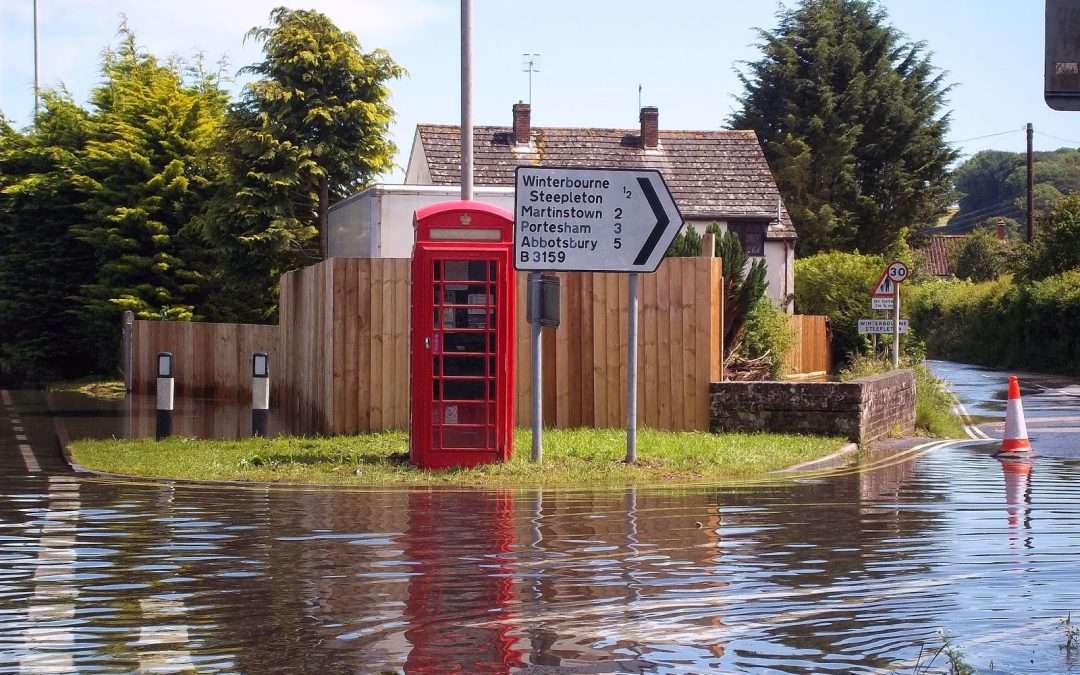Groundwater Flooding Problems
Groundwater flooding is one problem we see at the end of winter, or sometimes during warmer stretches of mid-winter. It occurs when the natural water table rises from its usual levels. If it rises high enough, it ends up flooding the surrounding areas. In most areas, this happens after long periods of rainfall. We don’t get that much in Utah; however, we do get snowmelt. When the snow starts to melt and sink into the groundwater, it causes the water table to rise. If there’s a lot of snow, or the snow melts too fast, it causes groundwater flooding.
What Are The Unique Traits of Groundwater Flooding?
Groundwater flooding has some unique elements to it. When excessive rain or overflowing canals cause flooding, the water tends to be very muddy. As the water flows along the ground, it picks up dirt and mud, making it very clearly messy. This means that not only do you have water cleaning to do afterwards, you’ve also got to clean up the dirt. Groundwater flooding isn’t usually very dirty because instead of flowing from somewhere else, it simply rises up from under your feet.
I say usually, because it does tend to mess with your sewage. This can happen even if the flooding doesn’t happen in your immediate area. If the flooding happens in an area where sewage is pumped to and processed, it causes the pipes to back up.
The other, much bigger problem with this kind of flood is that it’s hard to stop. With top-level flooding, where the water flows along the surface, you can put up sandbags and embankments to steer the water away from your home. When it comes up directly from below you, however, that’s a very different problem. It will come up through drains, through cracks in the foundation and flooring, and spill out into your house. When this happens, the water can sit for days and weeks while the water table levels lower.
What Homes Are At Risk?
It can be very hard to tell what homes are going to be at risk. Generally, homes at lower elevations are more likely to be at risk, but that’s not always the case. It all depends on the water table of the area. Thanks to this all occurring underground, it can be hard to tell exactly where the water table levels are. Various geological phenomena can make the water table in one area higher than where you’d expect it to be.
Underground structures tend to be at higher risk than above ground structures, since they’re much closer to the water table level already. If you have a basement, cellar, or underground shelter, groundwater flooding is certainly going to be more of a risk for you than someone who’s house is entirely above ground.
How Do I Prevent It?
This can be very hard, especially if your house is older. A lot of protections against this kind of flooding need to be built into the house. If you’re building a new home, you can install a foundation drainage system to steer water away from your home. For extra protection, you can have a false floor above the basement slab to let water drain off the surface into the drainage system. Sump pumps are often necessary to make these work efficiently enough to keep your basement from flooding.
If your home is older and doesn’t already have these protections in place, you have to excavate the foundation to add them. This can be very costly. If that’s not an option, you can keep your basement flooring as tiles, cement, or some other material that water won’t strongly damage. Raising furniture and appliances off the ground will also help prevent damage to your belongings. This makes your basement a little less comfortable, but it helps ensure that groundwater flooding causes little damage. The most you have to deal with is wet floors.
Are You Covered By Insurance
Something we’re seeing more of is groundwater flooding being treated as differently from run-off flooding or broken pipes. The rationale seems to be that other types of flooding are easier to prevent, so the risk to groundwater flooding must be assessed differently. Not all insurance companies do this, but we have come across stories of people who suddenly found their flood insurance didn’t cover groundwater flooding, leaving them out to dry. Well, not really dry, but you get what I mean.
Given that we’re hitting a warm stretch right now, we’re seeing a lot of snow melting in the valley. Depending on how long it lasts, this may put some areas at risk. Our advice to you is this: if you think you might be at risk, either because your home is at a lower elevation, or you have a basement or cellar, check with your insurance and make sure you’re covered. Hopefully, it won’t become a problem. If it does, you want to be covered.
Let Us Help
Flooding is a regular problem we deal with here at Alpine Cleaning and Restoration. Whether it’s from pipes that burst from freezing, rising water tables, or whatever the cause, we tend to see a lot of it towards the end of winter and early spring. Just as with regular flooding, we can help you clean this up. We have pumps, water vacuums, and drying fans/heaters to help you get the water out of your home and dry it up quickly. If you notice any flooding in your home, get a hold of us right away! The faster we get to it, the less damage it does, so time is of the essence. Don’t hesitate to call!


